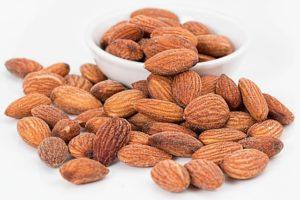– Ketone bodies (ketones) include acetoacetic acid, β-hydroxybutyric acid and acetone. They are oxidized in extra-hepatic tissues depending on their concentration – the higher they are, the more their combustion increases. The exception is acetone, the oxidation of which is more difficult and is eliminated with air and urine. This process proceeds in a different way than carbohydrate metabolism. In the case of energy deficits, however, it can be successfully used to maintain all the necessary functions of the body. Healthy cells then derive about 4.2 kcal of energy from 1 g of ketone bodies. However, pathological cells do not have such a possibility, which hinders their growth and development.
Ketosis and diet
 Ketosis is used in a low-carbohydrate (ketogenic) diet, like the OleoKeto diet, which involves limiting carbohydrate intake and increasing fat supply. – Even 80-90% of energy should come from this macronutrient at that time – explains dietitian. Ketone bodies resulting from the incomplete oxidation of fatty acids replace glucose in the metabolic pathways. The body begins to take advantage of its own and supplies during the diet (both fats consumed as well as those stored in adipose tissue are burned). As a result, the patient experiences energy and concentration, and metabolism and fat burning are accelerating. Weakening may be the development of cancer that does not receive its dose of “food”. Ketosis is also used in the therapy of drug-resistant epilepsy in children and Alzheimer’s or Parkinson’s in elderly patients. – It is worth remembering, however, that due to the large limitation of products that patients have consumed as a rule and with improper use, the ketogenic diet may contribute to an insufficient supply of energy and nutrients. Therefore, this therapy is best used under the care of a nutritionist – recalls Paulina Borek, a medical dietitian, a specialist in the field of nutrition of oncological patients.
Ketosis is used in a low-carbohydrate (ketogenic) diet, like the OleoKeto diet, which involves limiting carbohydrate intake and increasing fat supply. – Even 80-90% of energy should come from this macronutrient at that time – explains dietitian. Ketone bodies resulting from the incomplete oxidation of fatty acids replace glucose in the metabolic pathways. The body begins to take advantage of its own and supplies during the diet (both fats consumed as well as those stored in adipose tissue are burned). As a result, the patient experiences energy and concentration, and metabolism and fat burning are accelerating. Weakening may be the development of cancer that does not receive its dose of “food”. Ketosis is also used in the therapy of drug-resistant epilepsy in children and Alzheimer’s or Parkinson’s in elderly patients. – It is worth remembering, however, that due to the large limitation of products that patients have consumed as a rule and with improper use, the ketogenic diet may contribute to an insufficient supply of energy and nutrients. Therefore, this therapy is best used under the care of a nutritionist – recalls Paulina Borek, a medical dietitian, a specialist in the field of nutrition of oncological patients.
Cellular fuel
The OleoKeto diet introduces the body into ketosis as a result of the transition from carbohydrate metabolism to incomplete combustion of fatty acids, in order to obtain the energy necessary for life. Its main features include high content of healthy fats, maximum reduction of carbohydrates and sufficient supply of protein. According to the research, just a few days after the onset of ketosis and increased production of ketone bodies, they cover about 1/3 of the energy demand of the human brain. Then they become the main energy material and provide about 75% of the necessary “cellular fuel”.
Ketosis under control
 Ketosis, which is a natural physiological condition for humans, is sometimes erroneously identified with the pathological condition of ketoacidosis. That is why the concept of nutrient (diabetic) ketosis arose, which does not refer to the constant change in blood pH and is safe for the human body. After the period of fatty adaptation, the pH is maintained at a natural level, which guarantees normal functioning of the body. – Due to the large limitations of carbohydrate intake in the ketogenic diet and the prevalence of their occurrence in food products, the installation of a fully balanced menu may pose some difficulty for patients. The consequence of this may be a deficiency of vitamins and minerals, which are extremely important for cancer patients – warns the expert. Therefore, the persistent state of ketosis is worth supporting with foods for special medical purposes, such as Dekarcenal. It complements the diet that supports ketosis, supports the healing process and protects against co-morbidities that may occur as a result of nutritional deficits.
Ketosis, which is a natural physiological condition for humans, is sometimes erroneously identified with the pathological condition of ketoacidosis. That is why the concept of nutrient (diabetic) ketosis arose, which does not refer to the constant change in blood pH and is safe for the human body. After the period of fatty adaptation, the pH is maintained at a natural level, which guarantees normal functioning of the body. – Due to the large limitations of carbohydrate intake in the ketogenic diet and the prevalence of their occurrence in food products, the installation of a fully balanced menu may pose some difficulty for patients. The consequence of this may be a deficiency of vitamins and minerals, which are extremely important for cancer patients – warns the expert. Therefore, the persistent state of ketosis is worth supporting with foods for special medical purposes, such as Dekarcenal. It complements the diet that supports ketosis, supports the healing process and protects against co-morbidities that may occur as a result of nutritional deficits.
Contraindications to the use of a ketogenic diet
Supporting treatment with a ketogenic diet is the treatment of choice, but not everyone can use it.
Absolute contraindications to its use will be:
Congenital metabolic disorders:
carnitine deficit
deficit I and II of carnitine-palmite transferase (CTP)
deficiency of carnitine translocase
B-oxidation of fatty acids
deficiency of pyruvate carboxylase
And:
serious liver disease
cholelithiasis
kidney stones
hypoglycemia with an unexplained reason
organic acidosis
porphyria
diabetes
familial hyperlipidemia
The use of a ketogenic diet in people with gastro-intestinal reflux and in people whose stress associated with the use of the diet outweighs the potential benefits should also be considered.



